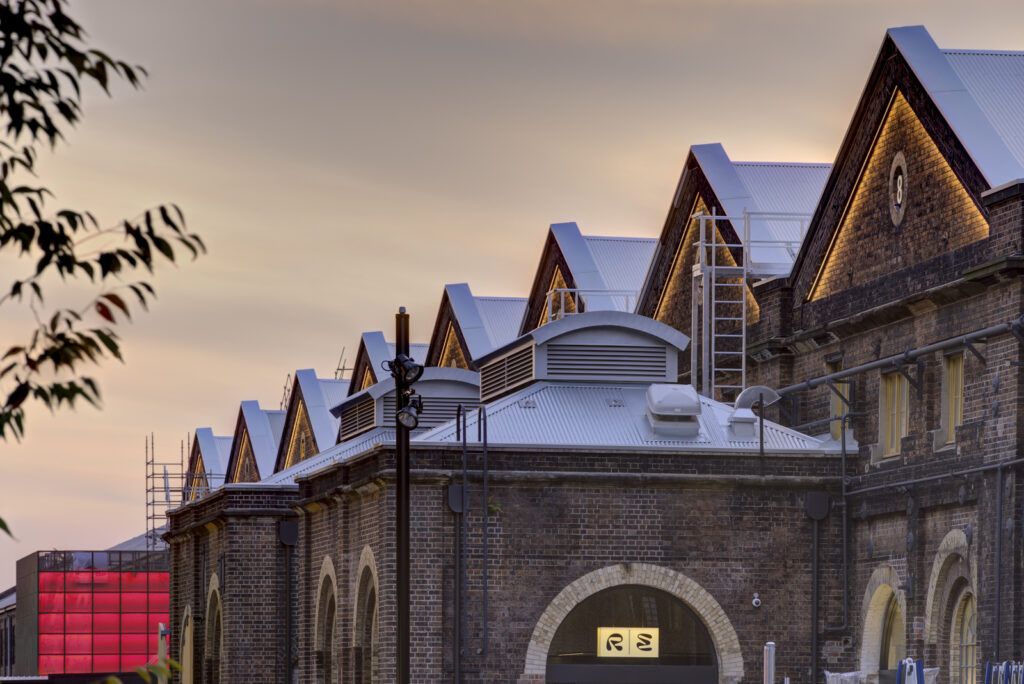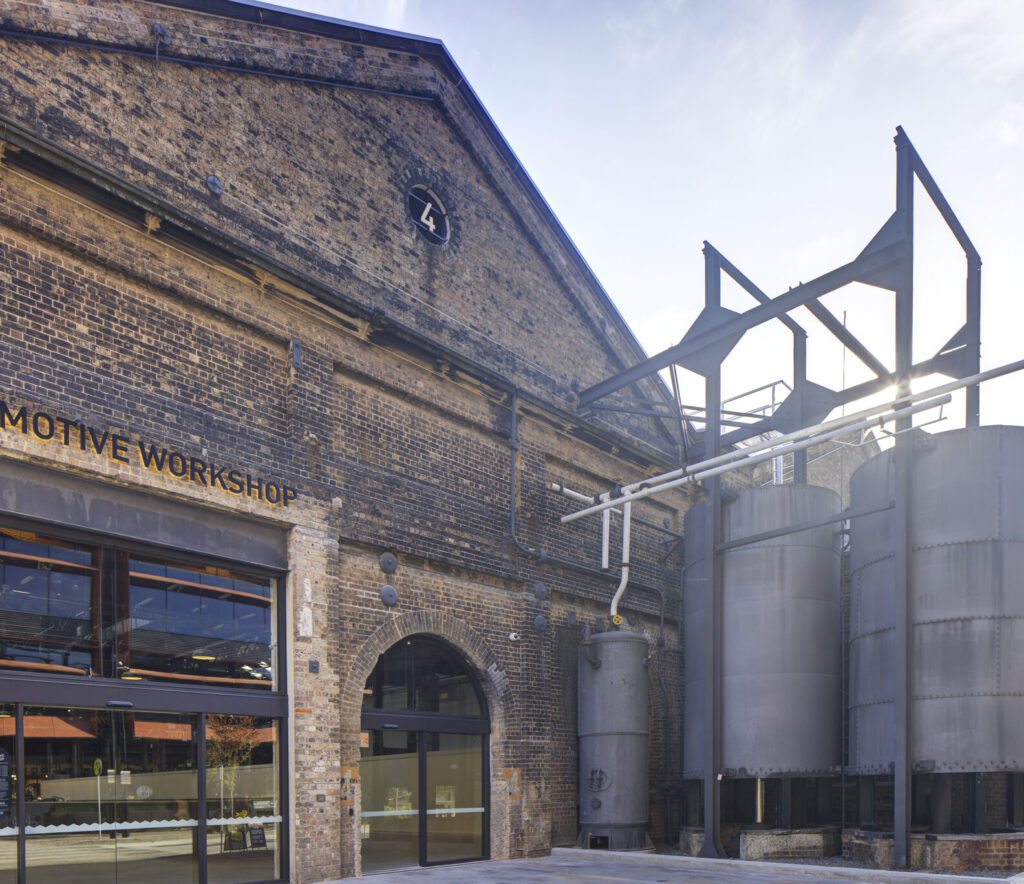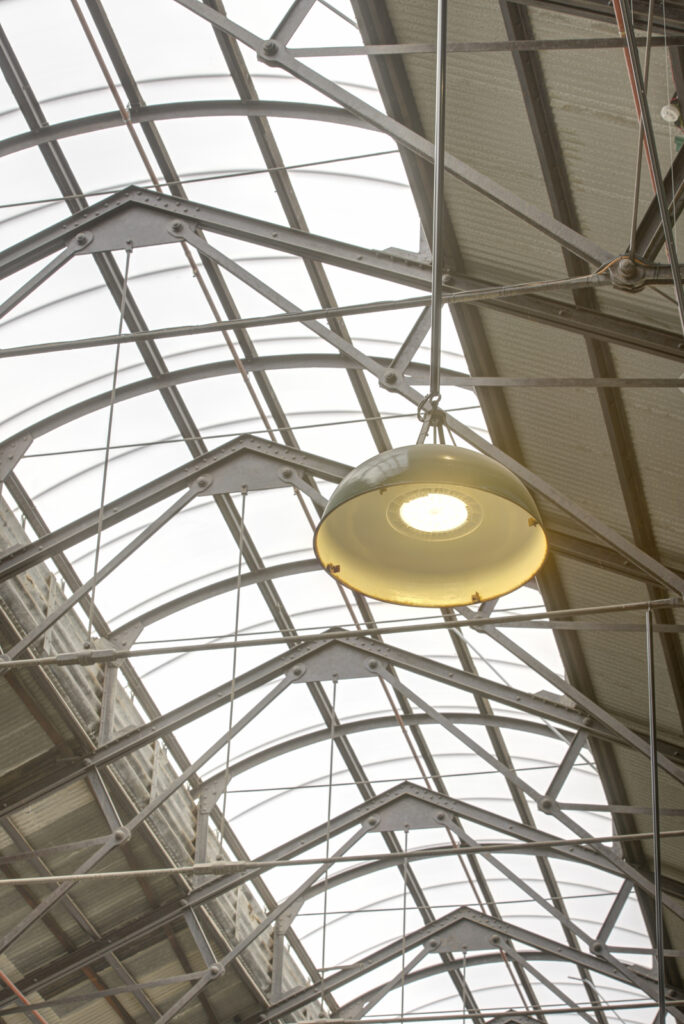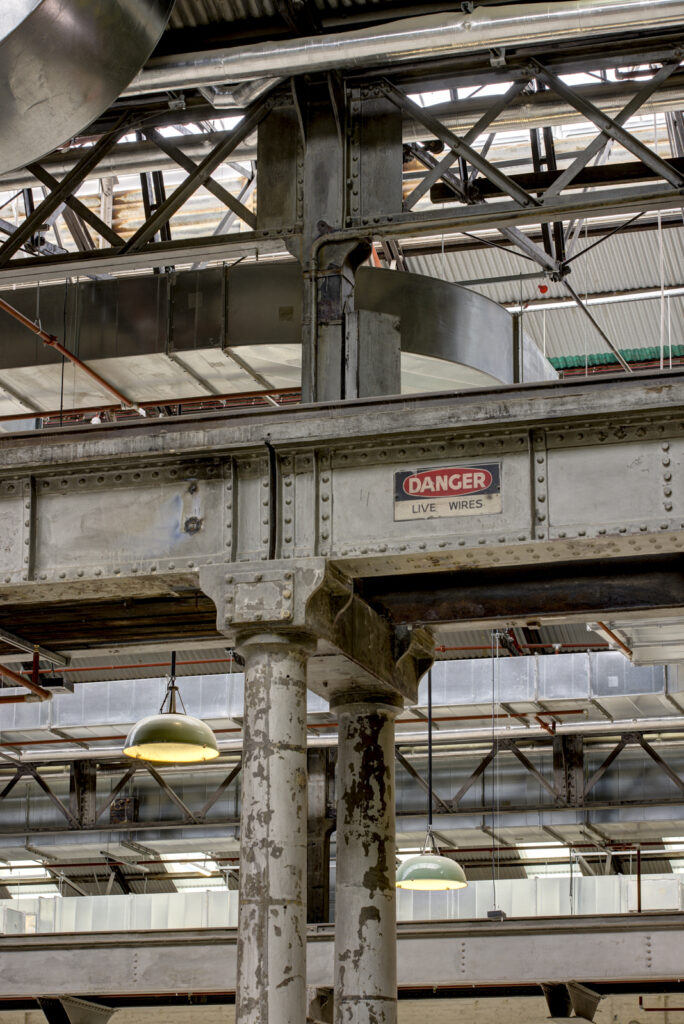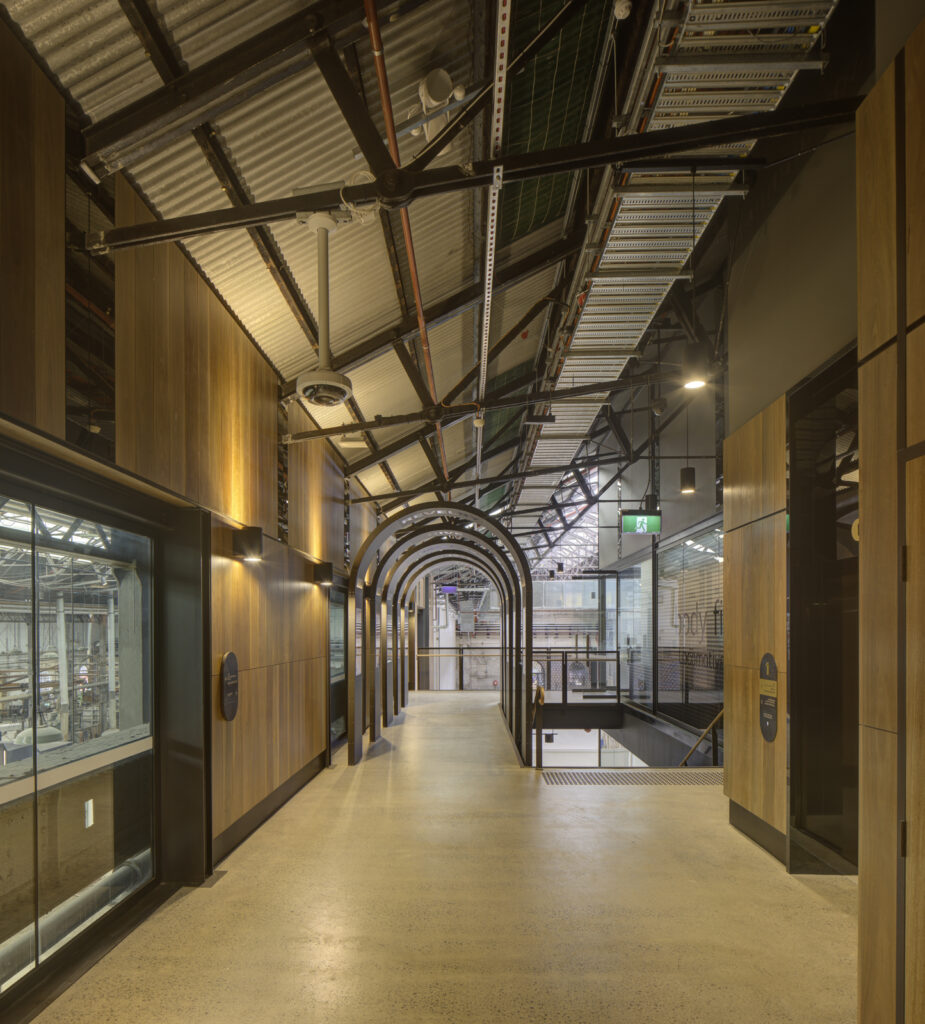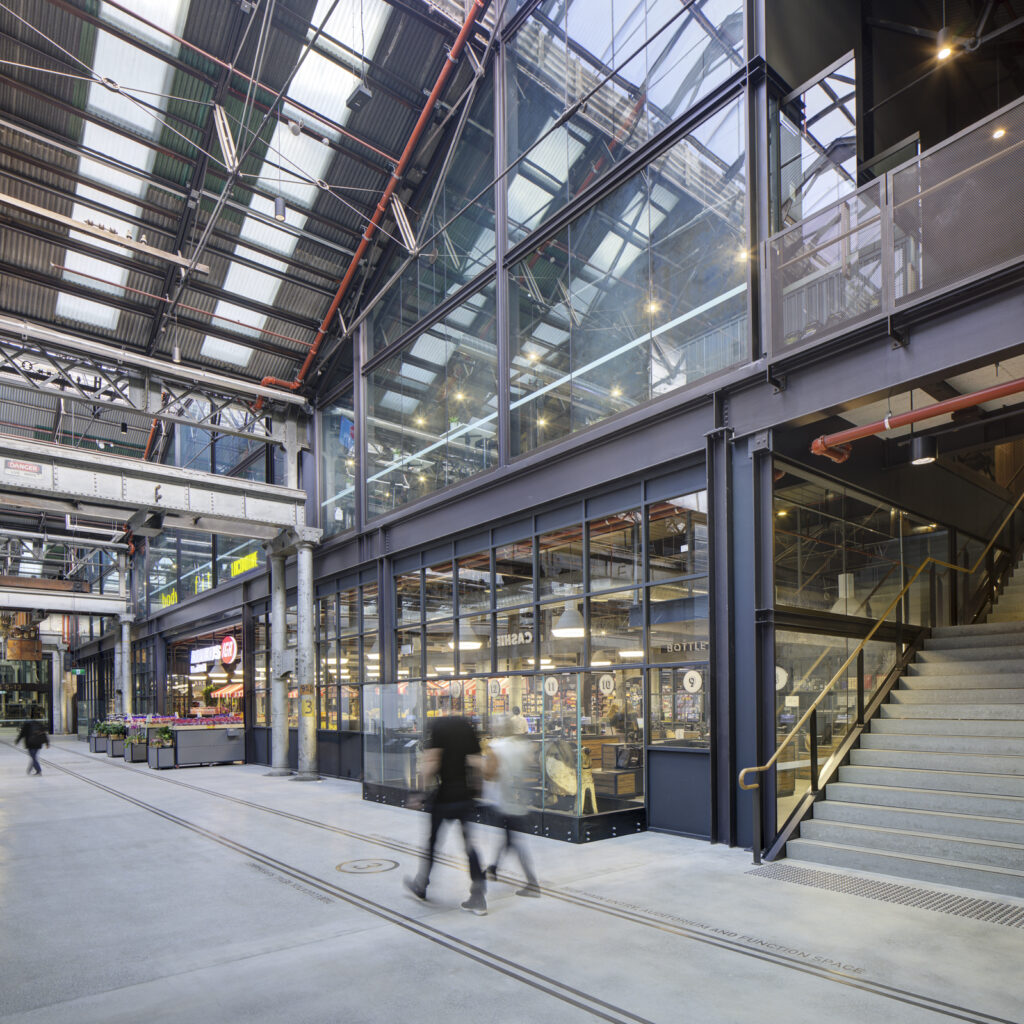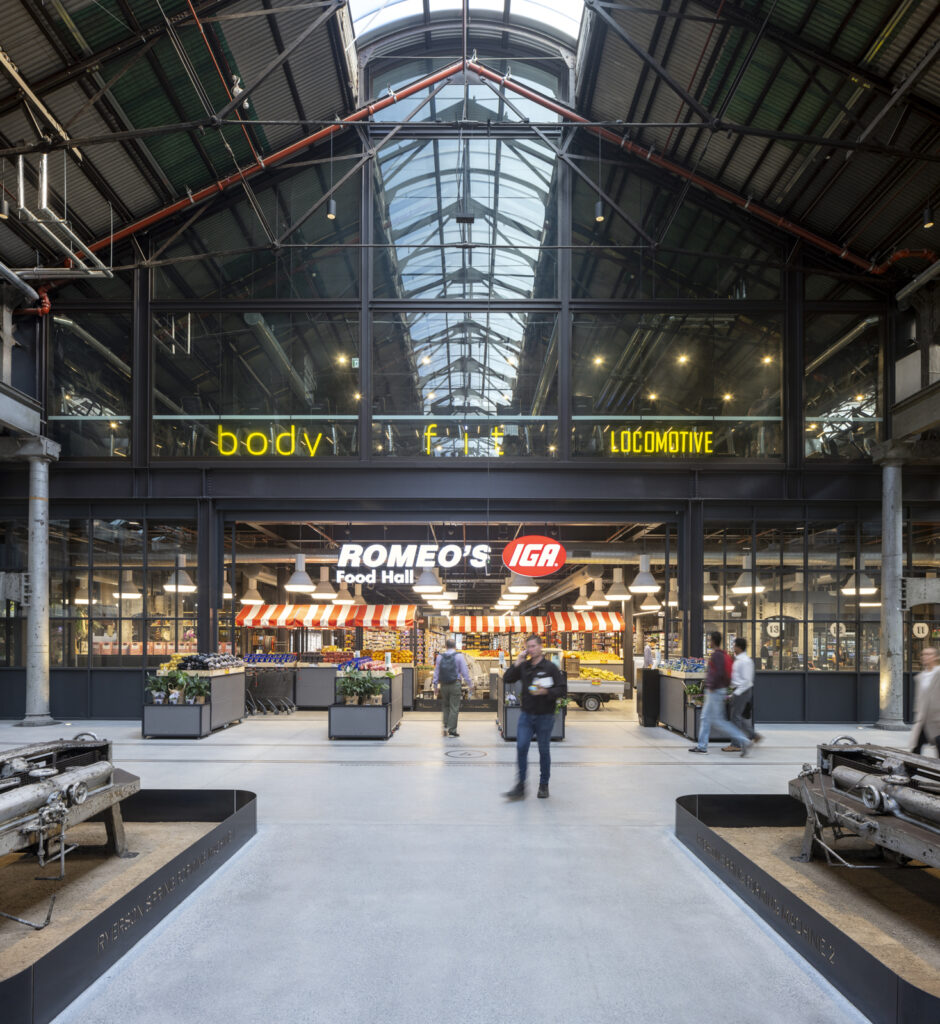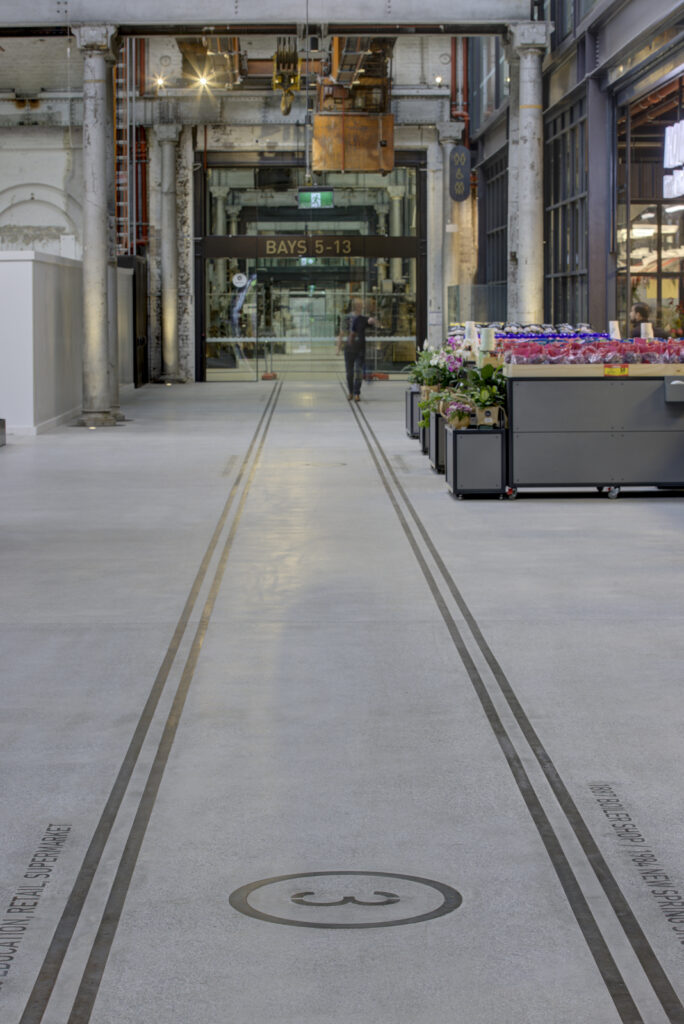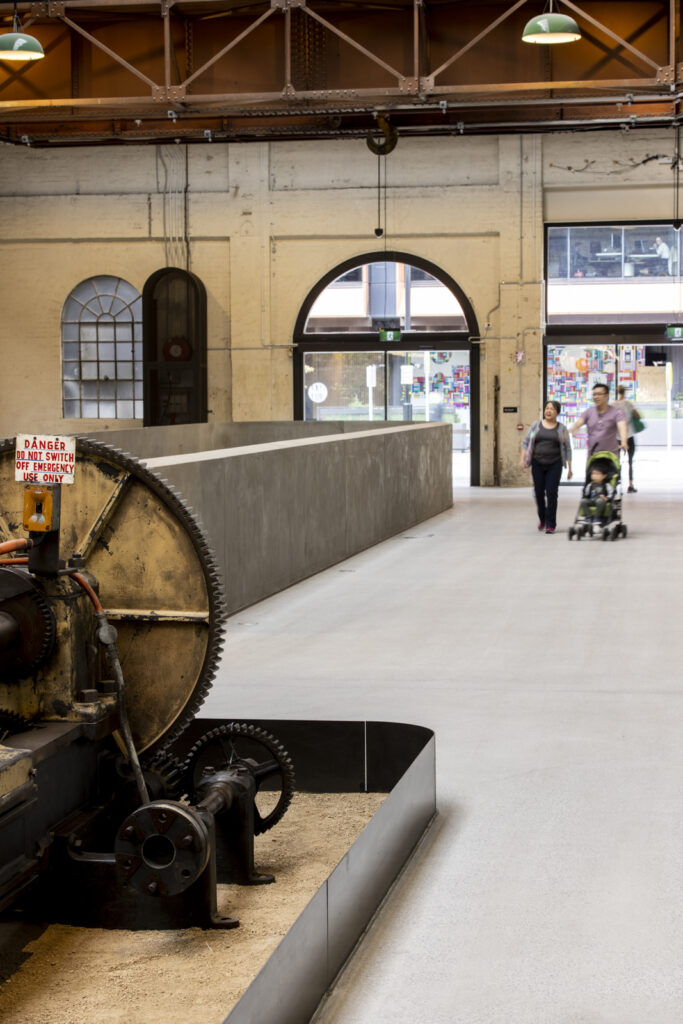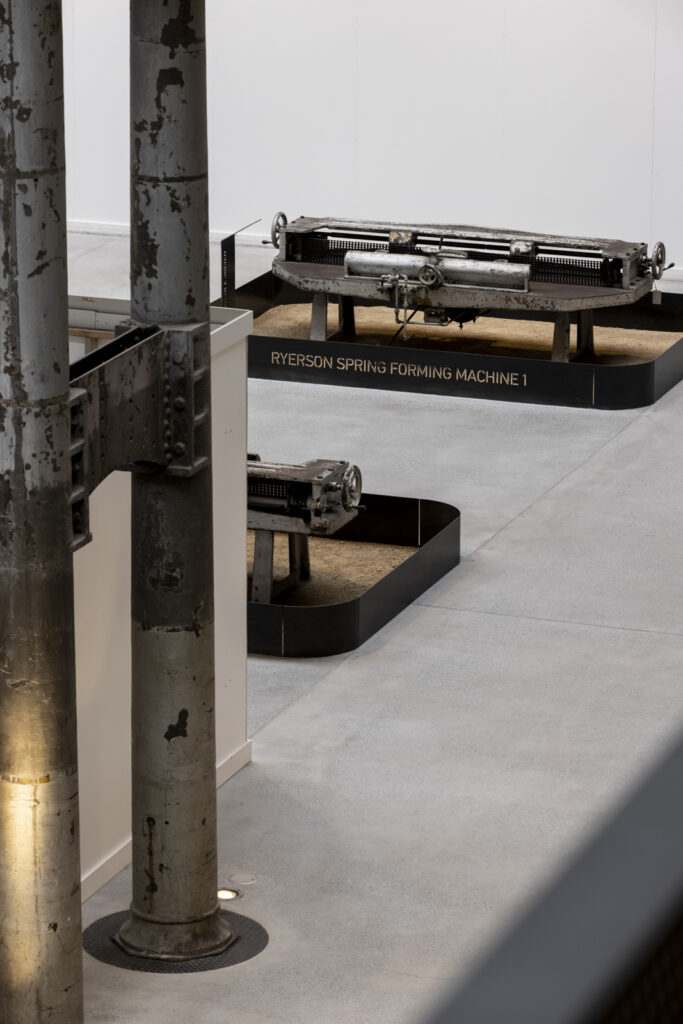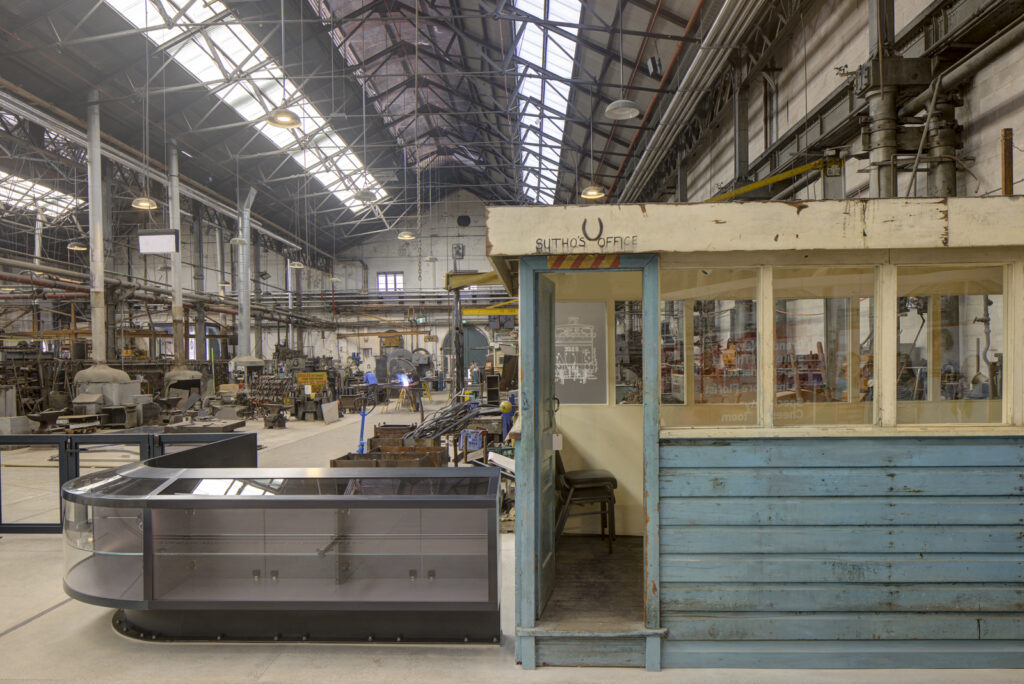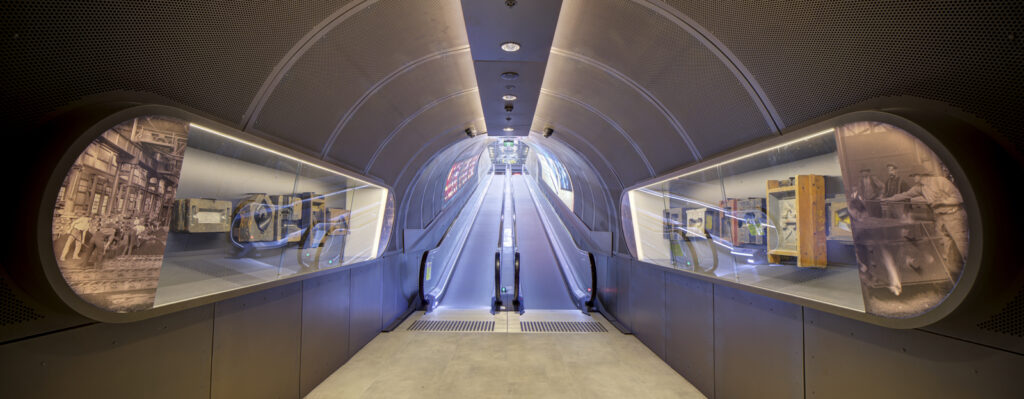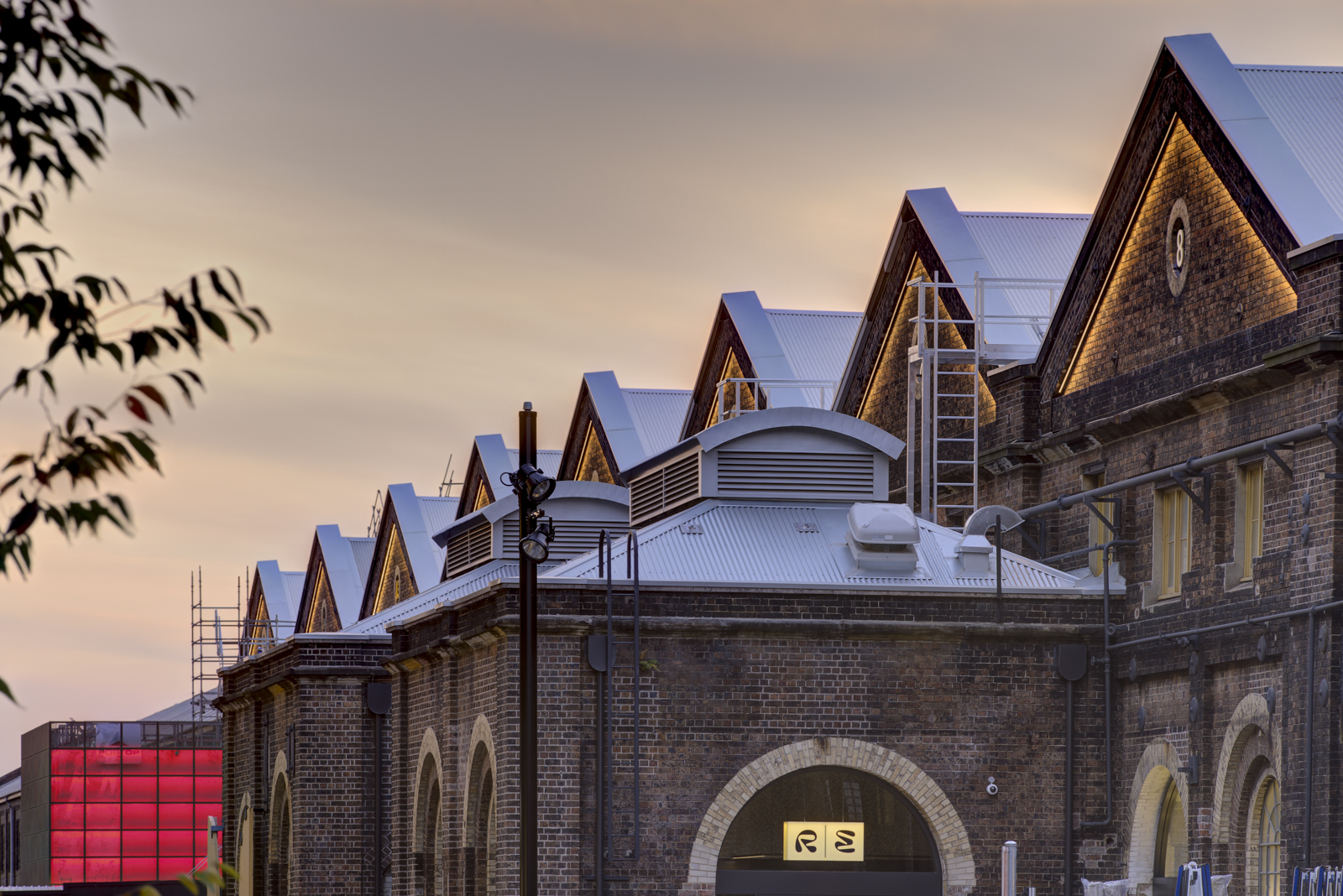Sydney’s heritage-listed South Eveleigh Locomotive Workshop has been transformed from an Industrial-era building into a captivating multi-use commercial and community precinct that honours the site’s rich history. The revitalisation includes large public and exhibition spaces, a specialty grocer, eateries, gym and education facilities, and the original blacksmith forge, in full working order.
The inner-Sydney Workshop holds exceptional heritage significance for New South Wales. The Workshop opened in 1887 for the maintenance, and later manufacturing, of steam locomotives. As such, it required a highly sensitive approach to its adaptive re-use.
Globally renowned design firm, Buchan, was engaged by Mirvac as the principal design consultant for the building’s interiors, wayfinding, signage and heritage interpretation. Buchan’s team closely liaised with lead architect Sissons and heritage specialists Curio Projects to ensure the integrity of the building’s heritage features.
Buchan’s design radically exposes and celebrates the Workshop’s original elements, in preference to hiding the building’s raw materials behind modern plasterboard walls or glass decals. Heavy timber beams are respectfully transformed into beautiful seating, display furniture and signage. Even the original dirt floors have been cleverly used in wall setbacks. The interior design is ‘brought to life’ by integrated 3D projections, graphics and displays to create a multi-sensory visitor experience.
Buchan Senior Interior Designer Michael Curtis embraced this unique project opportunity. “It’s unusual to visit a commercial venue that’s been made interactive and engaging through texture, visuals and even smell (from the blacksmith’s forge),” Michael says. “We’ve thought about how each and every element of the building’s layout can be used to encourage people to meander, stop, meet and shop.”
Celebrating antiquity and sparking curiosity
Buchan’s interior and brand experience team went to extraordinary lengths to create a sense of immersion in the past. The inclusion of little moments of delight – projections of silhouette ghosts, curiosity cabinets containing original artefacts, replays of original sounds and voices – combine to make this a truly distinctive centre.
In line with Mirvac’s vision for the project, Buchan was determined to create opportunities for people to engage with the site’s history. “We wanted the artefacts and history to be universally engaging, not to merely mimic a traditional museum experience,”says Buchan Senior Designer Patrick Shirley.
A new travelator has been deftly designed to take visitors on a storytelling journey. Moving through the travelator tunnel, visitors encounter ever-changing projections of the site’s vivid past, including First Nations’ stories of the Gadigal people of the Eora Nation.
The design uses the building as a canvas to showcase the living history of the place. Even massive, intact machinery like the giant, in situ, Davy pressure pump (the largest in the Southern Hemisphere) has been employed to create the experience of working in the original building. “We’ve projected footage of the Davy pump in action creating steel railway tracks, onto the pump itself, complete with noise and simulated smoke,” Patrick says. “This creates an incredible atmosphere as well as showing visitors the skills needed to operate the press.”
Developer applauds Buchan’s design
According to the precinct’s developer, Mirvac, the building’s interior has been transformed into a ‘living museum’. Mirvac’s brief to Buchan was to create an appealing and engaging retail and office precinct and an immersive experience that tells the stories of the site, its inhabitants, and its significance in Australian history.
By all accounts, that brief has been realised with a dynamism beyond the developer’s highest expectations. Head of Mirvac’s Integrated Investment Portfolio, Campbell Hanan said the precinct was home to Sydney’s thriving economy in the late 19th century and these buildings were steeped in that history.
“Mirvac’s vision was to celebrate the site’s unique heritage, connecting its history and the stories of the people who once worked and lived here with the thousands of modern-day South Eveleigh workers and visitors today,” he said. “Buchan has done a great job, bringing this vision to life through incredible design that celebrates the industrial appeal of the original Locomotive Workshed, creating new ways for everyone to appreciate the fascinating 1800’s era architecture.”
The Locomotive Workshop is nearing completion with a majority of the site operational and a full opening in 2022, set to provide an unparalleled experience for the local community and visitors alike.
About the South Eveleigh Locomotive Workshop
The Locomotive Workshop opened in 1887 for the maintenance of steam locomotives and in 1908 began manufacturing steam locomotives. It not only contributed to the establishment and growth of the Australian railway network, but also became one of the largest employers in Australia. In addition to its social and cultural value, the building is a rare remaining example of a large-scale nineteenth-century railway workshop, and its vast collection of machinery and tools has been preserved. While an adaptive reuse of some of the bays was undertaken in the 1990s (the site was formerly known as Australian Technology Park), two blacksmithing bays remained mostly intact and in continual operation.

Locomotive Workshop featured in:
Architecture&Design
InDesignLive
SCN
PROJECT DETAILS
Project: South Eveleigh Locomotive Workshop (Bays 1 to 4A)
Project team Architecture, Interior Design and Heritage Interpretation: Anthony Palamara, Michael Curtis, Amanda Baumann, Solvene Bisceglia, Karina Ellis, Maha Mustafa, Mathew Dalby, Bonnie Zhou, Coco Reynolds, Duncan Teevan, Jake Chung, Michael Morony, Sajani Wanniarachchi
Project team Brand Experience, Wayfinding, Graphics/ Signage and Heritage interpretation: Anthony Rawson, Patrick Shirley, Rafe Delaney, Gary Edmonds
Precinct Developer: Mirvac
Lead Architect: Sissons
Heritage Interpretation Specialist: Curio Projects
Photography | Brett Boardman.
